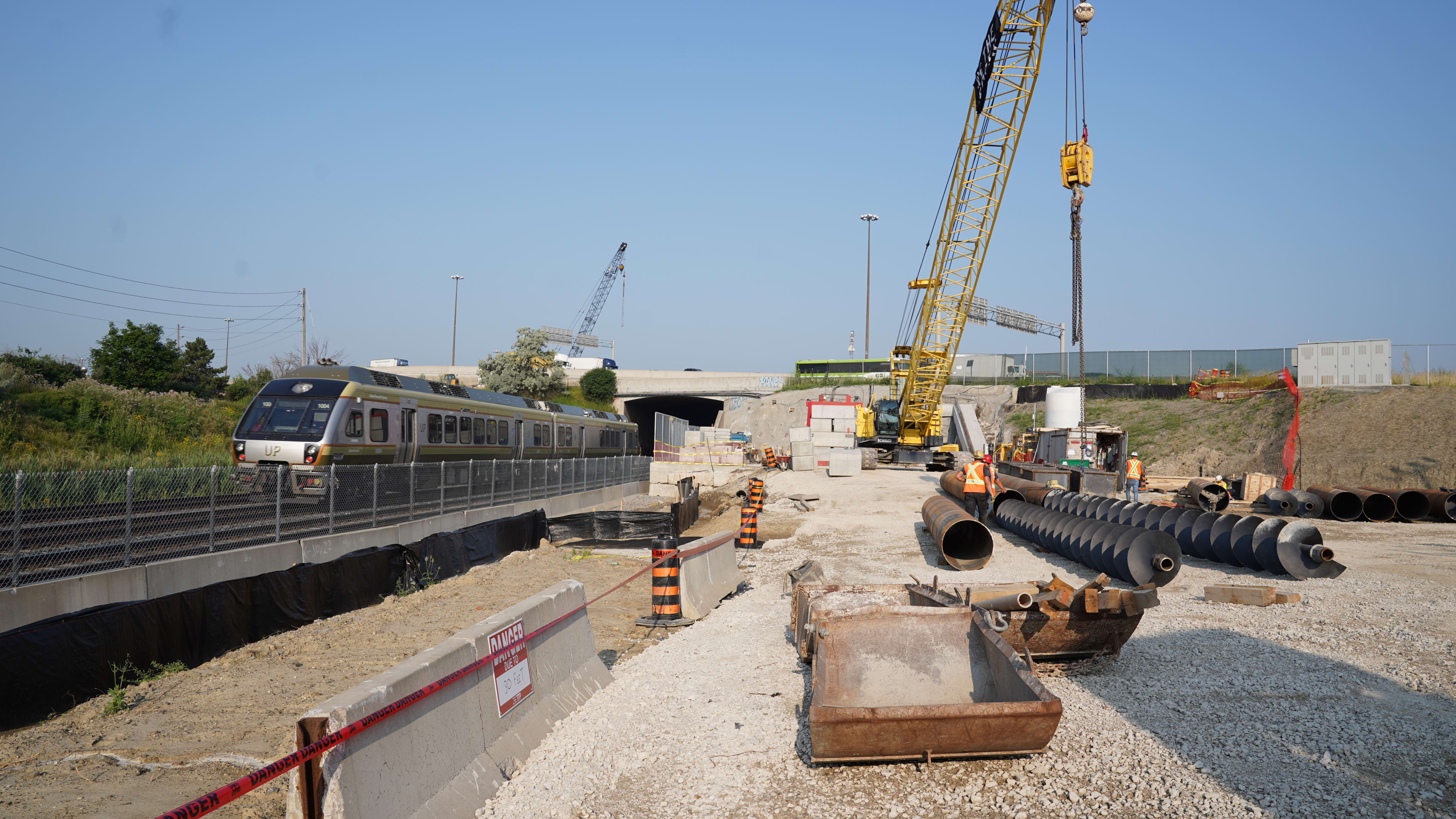Highway 401/409 tunnel digging project begins
Dirt and rock will be removed just below one of the country’s busiest highway interchanges.
Jul 26, 2019
To bring more service to GO Transit customers, crews will be digging under 21 live lanes of Ontario traffic.
Metrolinx and Infrastructure Ontario today (July 26) announced the official start of tunnel construction where Highways 401 and 409 meet.
The project will increase service to communities along the Kitchener GO Line, which is a priority for Metrolinx. Today’s milestone event marks a significant step towards achieving two-way, all day GO service.
Crews prepare the tunnel site on July 26. Their work will help lead to two way, all day service on the line. Photo by Jason Sandford
The work includes construction of two single track tunnels – also known as twin tunnels – located two metres north of an existing tunnel under Highways 401 and 409. This is needed to accommodate additional tracks as required for the GO Expansion program.
“Constructing under one of the busiest stretches of highway is no easy task, but by working with Toronto Tunnel Partners we are excited to use innovative engineering techniques for tunnelling that will allow us to bring more trains and more service to customers faster, giving them the service they need to get them to where they need to go,” says Stephanie Davies, Executive Vice President of the GO Expansion program.
The engineering project is both formidable and fascinating.
As part of the project, one track from the existing tunnel will be moved into the new tunnel after construction is complete. Here, crews work on July 26 to prepare for the heavy job ahead. Photo by Jason Sandford
As part of the project, one track from the existing tunnel will be moved into the new tunnel after construction is complete. Also included is the replacement of retaining wall footings that support the ramp from eastbound Highway 409 to eastbound Highway 401.
Building the new twin tunnels is a feat on its own. They will be approximately 176 meters in length, and are being constructed underneath 21 live lanes of traffic on Highways 401 and 409, one of the busiest sections of highway in North America. The work is not expected to impact highway traffic. Once complete, the tunnels will carry two tracks that permit operating speeds of up to 90 mph for passenger traffic and up to 35 mph for freight traffic.
Innovation and safety are at the core of this work. To ensure that communities are served faster, better and more frequently; advanced techniques are being employed, such as Sequential Excavation Method (SEM) tunnelling. SEM tunneling uses excavators, as opposed to a tunnel boring machine in short sections, 1 metre at a time, as opposed to the continuous boring used by a tunnel boring machine.
Let’s dig a little deeper.
A worker inspects a section of concrete in this July 26 image. Photo by Jason Sandford
Another method being used is auger boring, however, it’s not your typical boring strategy. This method involves installing a pipe ’umbrella’ – or pipe ’roof’ – of 813mm steel pipes above the proposed tunnel excavation, prior to tunnelling. The pipes are installed via a hydraulic jack, which contains a large auger with a cutting head to cut and remove ‘spoils’ (soil from inside of the pipe). The pipes will be installed over a series of 4 ‘reaches’ per tunnel, with the longest reach being 75m.
The techniques and tools used for the tunnel project are cutting edge. Photo by Jason Sandford
This long reach is being guided by an optical guidance system. This is one of the first times this technology has been used in Ontario.
The scope and intricate nature of this build is challenging, but the benefits of this new infrastructure will be felt for years to come, especially to the many communities GO Transit serves on the Kitchener corridor.
(Editor’s Note – This story was updated on Jan. 9, 2020 to better reflect the project timelines)
by Georgina Collymore Metrolinx senior communications advisor
